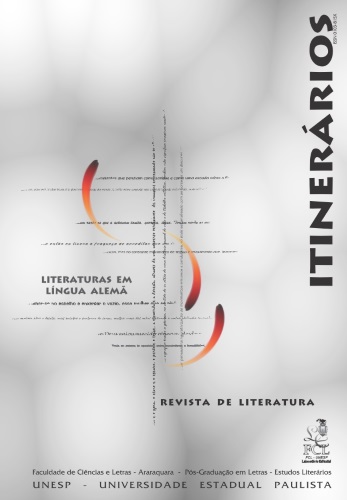Figurações do bom mercador em The merchant of Venice, The London merchant e Nathan der Weise
DOI:
https://doi.org/10.58943/irl.v0i39.7587Palavras-chave:
Teatro e sociedade, Ascensão da burguesia comercial, The merchant of Venice, The London merchant, Nathan der Weise,Resumo
Este artigo enfoca a representação do comerciante, colocando em diálogo as peças The merchant of Venice (1600), de William Shakespeare, The London merchant (1731), de George Lillo, e Nathan der Weise (1779), de Gotthold Ephraim Lessing. O pano de fundo da comédia inglesa é a movimentada cena renascentista italiana, sobretudo a veneziana, em que circulam pessoas de países, raças, posições sociais e crenças religiosas distintas. The merchant of London (1731), do também inglês George Lillo, remete, por sua vez, ao cenário de consolidação das instituições burguesas de uma classe média inglesa urbana que se delineia quase um século e meio depois. Finalmente, a Jerusalém das Cruzadas, com seus enfrentamentos bélicos entre cristãos, muçulmanos e judeus, que constitui o cenário de Nathan der Weise, fornece o distanciamento histórico e geográfico conveniente para a representação de conflitos raciais e religiosos da contemporaneidade de Lessing. A caracterização favorável e o protagonismo do mercador nos textos elencados são indícios da crescente visibilidade da burguesia mercantil dentro de contextos tão distintos como a Inglaterra renascentista, a Inglaterra das primeiras e a Alemanha das últimas décadas do século XVIII.
Downloads
Edição
Seção
Licença
Os manuscritos aceitos e publicados são de propriedade da revista Itinerários. É vedada a submissão integral ou parcial do manuscrito a qualquer outro periódico. A responsabilidade do conteúdo dos artigos é exclusiva dos autores. É vedada a tradução para outro idioma sem a autorização escrita do Editor ouvida a Comissão Editorial.

